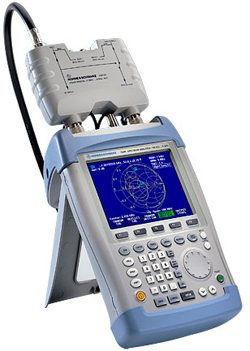SI for longevity
When it comes to cost, every test engineer has to find a way around. The modular instrumentation approach reduces redundancy, thereby reducing the cost. If you need a specific type of measurement, you will probably add the module on the same common bus at some cost. Synthetic instrumentation (SI) approach eliminates redundancy by providing a common synthesis platform.
According to the Synthetic Instrument Working Group, ‘synthetic instrument’ is a reconfigurable system that links a series of elemental hardware and software components with standardised interfaces to generate signals or make measurements using numeric processing techniques.
With SI, if you want to add any new measurement capability, ideally no additional hardware but a software is needed to perform the measurement task. SI is a piece of software that runs on a generic hardware. There is tremendous market opportunity for SI.
SI shrinks test systems and enhances their longevity. It’s a key strategy for providing long-term support for the hardware in aerospace and defence test systems. It’s much easier to maintain backwards-compatibility in new products for the separate building blocks of instruments, such as frequency converters and digitisers, than for an entire instrument.
While these modules are targeted at aerospace and defence applications, they are derived from COTS products, which gives the aerospace and defence customers some price advantage. Some of the recent PXI and LXI-based synthetic instruments offer the best compromise between cost, performance, size, and, most importantly, long life.
ATE’s bus technologies
Many ATE vendors promote one bus platform over the other. The platform choice is often driven by the application requirements. Justifying this, Semancik says, “For example, rugged airborne or flight-line systems have historically been based on VMEbus. However, VPX has recently emerged as the next-generation solution for this area, incorporating high-speed switched serial backplanes for improved performance.”
VMEbus continues to dominate large-scale automatic test equipment (ATE) with modular, high-performance instrumentation and high-integrity switching solutions that can be easily reconfigured to meet changing requirements.

Test equipment need to be supported over the long term, typically 15 to 20 years, to match the long life spans of military and aerospace equipment.
When PXI was introduced, many thought it would replace VXI. But PXI successfully grew creating its own market share. It is entering some of the applications in the ATE and functional test and measurement areas in the aerospace, military and defence markets.
[stextbox id=”info” caption=”T&M equipment used in aerospace & defence”]1. RF signal generators
2. Microwave signal generators
3. Vector signal generators
4. Arbitrary waveform generators
5. High-end and real-time spectrum analysers
6. High-end signal analysers
7. Handheld spectrum and network analysers
8. Vector network analysers
9. Power meters and power sensors
10. EMC systems
11. ATE[/stextbox]
Krishnan says, “This year, PXI has reached the milestone of more than 100,000 deployed systems since its introduction, which includes an estimated 600,000 PXI modular instruments and related devices. According to industry analyst Frost and Sullivan, the strong adoption of PXI systems is expected to continue with a projected compound annual growth rate of 17.6 per cent through 2014.”
LXI is the next generation of test systems combining state-of-the-art measurements in a small package at a cost-effective price. “The LXI approach utilises high-speed Ethernet as the underlying communications link, and provides additional functionality for a high degree of interoperability and synchronisation. Key functionality found on LXI Class A instruments, such as IEEE 1588 (precision time protocol), provides exceptional over-the-wire synchronisation without any additional cable or connection,” shares Semancik.
LXI leverages and builds upon some of the most attractive features of VXI. It brings the advantages of computer independence and a modular architecture (small form factor and high-speed communications) without the overhead of a card-cage and proprietary link to the PC. Awasthi adds, “With LXI, each module is self-contained, requires no start-up decisions and can be added without penalty as needed.”
Many experts and analysts believe that all these bus technologies are likely to coexist, as each one has its own merit and is suitable for different applications.








